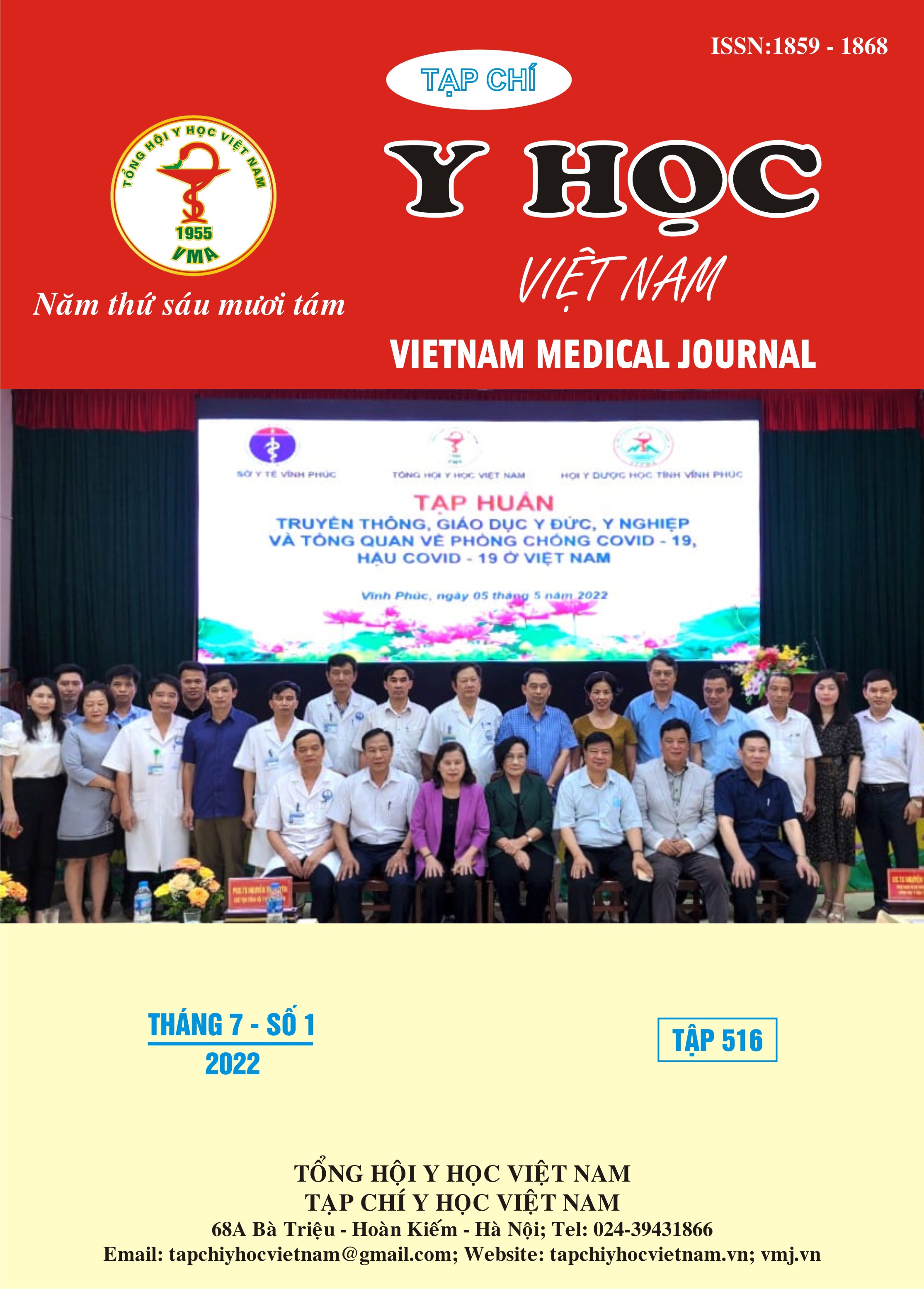THE PREVALENCE OF G6PD DEFICIENCY AND SOME RELATED FACTORS IN NEWBORN AT CAN THO OBSTETRICS AND GYNECOLOGY HOSPITAL 2021-2022
Main Article Content
Abstract
Background: G6PD deficiency is the most common enzyme disease in the word anh in Vietnam. Objectives: To determine the rate of G6PD deficiency and some related factors in neonates at Can Tho City Obstetrics and Gynecology Hospital, 2021-2022. Materials and methods: a cross-sectional descriptive study on a total of 4544 newborns at Can Tho City Obstetrics and Gynecology Hospital in 2021-2022. Results: There were a total of 4544 infants participating in the study, of which 2389 (52.6%) were male and the remaining 2155 (47.4%) were female. Most of the subjects belong to the Kinh ethnic group (99%), the rest belong to the ethnic group: Khmer (0.6%), and other ethnic groups such as Hoa, Muong, Nung and Tay (0.4%). The newborn G6PD screening test on the GSP system recorded 79/4544 (1.745%) infants with a G6PD index ≤ 17.2U/dl identified as having a high risk of G6PD deficiency. These 79 infants continued to be confirmed to have G6PD disease by the quantitative method of G6PD enzyme activity on the Cobas 6000 system, the results showed that 76/4544 (1.67%) infants had the disease because the G6PD index was lower than 6, 97 U/g Hb. Results on some related factors: except for gender (p=0.00); place of residence (p=0.002), the remaining variables are: ethnicity; fetal weight at birth; gestational age; child order; education, occupation, age of father and mother are not statistically significant with p>0.05. Conclusions: The rate of G6PD deficiency in newborns at Can Tho City Obstetrics and Gynecology Hospital was 1.67%, there was a statistically significant relationship between G6PD deficiency with sex and significant place of residence. Statistical significance with p < 0.05.
Article Details
Keywords
G6PD, genetic diseases, infants, Can Tho City Obstetrics and Gynecology Hospital
References
2. Ngô Thị Bình Minh, Phạm Thanh Long, Lê Minh Khôi và cộng sự (2021), Nghiên cứu khảo sát tỉ lệ bất thường của xét nghiệm sàng lọc sơ sinh tại Bệnh viện Đại học Y Dược TP. Hồ Chí Minh, Tạp chí Y học TP. Hồ Chí Minh, số 25(2), tr.157-162.
3. Arain Y. H. and Bhutani K. V. (2014), Prevention of Kernicterus in South Asia: role of neonatal G6PD deficiency and its identification,
Indian J Pediatr, 81 (6);599-607.
4. Castro S, Weber R, Dadalt V, Tavares V, Giugliani R. (2006), Prevalence of G6PD deficiency in newborns in the south of Brazil. J Med Screen.;13(2):85-6.
5. Chunyun Fu, Shiyu Luo, Qifei Li and et al. (2018), Newborn screening of glucose-6-phosphate dehydrogenase deficiency in Guangxi, China: determination of optimal cutoff value to identify heterozygous female neonates, Nature. 8:833
6. Elella, S. A., Tawfik, M., Barseem, N., & Moustafa, W. (2017), Prevalence of glucose-6-phosphate dehydrogenase deficiency in neonates in Egypt, Annals of Saudi medicine, 37(5), 362–365.
7. Iranpour R, Hashemipour M, Talaei SM, Soroshnia M, Amini A. (2008), Newborn screening for glucose-6-phosphate dehydrogenase deficiency in Isfahan, Iran: a quantitative assay. J Med Screen;15(2), pp.62-4. doi: 10.1258/ jms.2008.008027.
8. Jalloh A, Tantular I S, Pusarawati S and et al. (2004), Rapid epidemiologic assessment of glucose‐6‐phosphate dehydrogenase deficiency in malaria‐endemic areas in Southeast Asia using a novel diagnostic kit, Trop Med Int Health, 9 (5); 615-623.
9. Lauden, S. M., Chongwain, S., Achidi, A., Helm, E., Cusick, S. E., Krug, A., Slusher, T. M., & Lund, T. C. (2019), Prevalence of glucose-6-phosphate dehydrogenase deficiency in Cameroonian blood donors. BMC research notes, 12 (1), 195.
10. Ruwende C and Hill A. (1998), Glucose-6-phosphate dehydrogenase deficiency and malaria, Journal of molecular medicine, 76 (8): 581-588.


